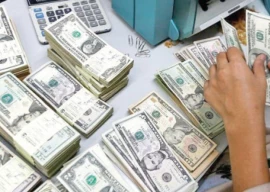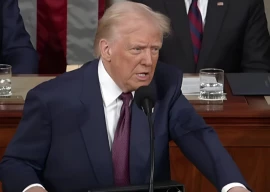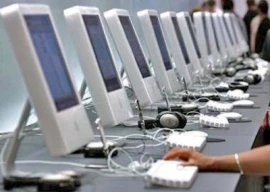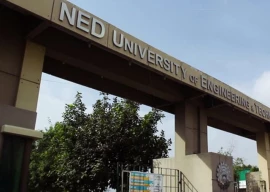
Rizvi’s upward movement on the social ladder corresponds with the growth in Pakistan’s banking sector that he has been part of since 2004.
In 2000, the combined profit-before-tax of all Pakistani banks was Rs4.5 billion. It reached Rs80.7 billion in 2009 – almost 17-fold increase over nine years!
With more than 8,000 branches of 41 scheduled banks all over the country, the banking sector has witnessed phenomenal growth in the past 10 years: assets of the banking system have been growing at an average of 14.8 per cent since 2001.
The exceptional growth in the banking sector has created thousands of private-sector jobs. The public sector controlled almost 80 per cent of the banking industry in 1997. However, after privatisation of several banks, the figure reduced to 20 per cent in 2004.
Rizvi said that to buy his apartment he took out a loan from his bank in 2008 at a reduced interest rate. Generally, the mark-up on home loans for ordinary customers is around 20 per cent. But the interest rate Rizvi is paying on his home loan as a bank employee is just five per cent.
He said he now lets out the apartment for Rs14,000 a month. The monthly instalment he pays to his bank is Rs.13,000, which means that without paying a single rupee out of his pocket, Rizvi not only bought his own apartment, but also makes an additional Rs1,000 every month – thanks to the fringe benefits of his bank job.
Similarly, car financing is also cheap for bank employees. While ordinary customers pay a 16-18 per cent mark-up on car loans, a bank employee gets it at a nominal rate of about five per cent.
“Every banker out there drives his own car and lives in, or rents out, his own flat. Banks pay well. And they give you facilities no other employer can afford to give its employees,” Rizvi said.
High profits for commercial banks over the past decade have resulted in the expansion of the banking sector, creating more jobs and promising better compensation packages for middle-class young men and women with tertiary education.
There are many reasons for the expansion in the banking sector in Pakistan. Most importantly, privatisation of nationalised banks spurred growth and increased overall banking standards in the 2000s. The share of private-sector banks in aggregate assets of the banking industry surged from 44 per cent in 2000 to over 77 per cent in 2005.
The Musharraf government brought down the tax rate on the banking business from 58 per cent to 35 per cent, making it at par with the corporate sector. The gradual reduction in the tax rate increased the bottom line of Pakistani banks, as banking became the most profitable sector at local bourses during 2005.
Moreover, the net interest spread, which is the difference in the borrowing and lending rates of banks, reached 8.9 per cent in 2011 as opposed to less than 4.5 per cent in 2005, bringing further profits to Pakistani banks.
The increase of mechanised processes, such as ATMs and internet banking, has also reduced operating costs. According to former State Bank governor Ishrat Husain, the average cost of processing a cheque in 2005 was about Rs50 while that of ATM withdrawal was just Rs15.
A World Bank report published in 2008 said only 14 per cent of Pakistan’s population has access to formal banking facilities. It means the banking industry has the potential to sustain its current pattern of growth for a long time.
“We’re four brothers. Three of us are bankers. I wish my youngest brother, too, had joined banking,” Rizvi said.
Published in The Express Tribune, December 26th, 2011.























COMMENTS
Comments are moderated and generally will be posted if they are on-topic and not abusive.
For more information, please see our Comments FAQ